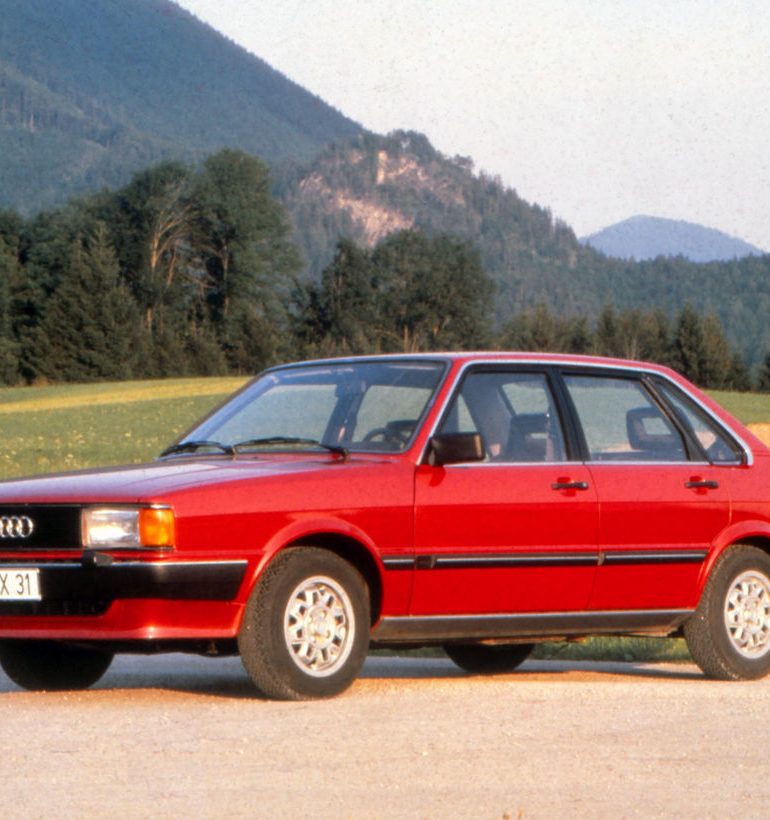Audi 80
The follow-up to the 1965 60/72/80/Super 90 F103 range that re-established Audi post-war, the 1972 Audi 80 – codenamed B1 – was an early example of the premium compact saloon whose direct descendent today is the Audi A4. Its creation was led by Ludwig Kraus, the man behind the 1968 Audi 100, and it shared a similar mechanical layout with the engine mounted ahead of a transaxle that drove the front wheels.
Available initially with the new EA 827 family of 1.3, 1.5 and 1.6-litre petrol engines (see right), the 80 was notable for its fine finish and cabin comfort. And technically, it broke new ground with its novel steering geometry, which enabled it to pull up in a straight line even if one front wheel was running on a surface more slippery than the other or if there was a sudden tyre failure.
The Audi 80 was available as a two-door or a four-door and, in a very limited number of markets, including the UK, as an estate.
The Audi EA827 engine
Audi’s all-new engine developed for the 1972 Audi 80 would also be used by Volkswagen, first in the Passat, then the Scirocco and Golf. It eventually became the most-produced engine in the Group’s history, topping even the Beetle’s air-cooled flat-four.
It would eventually become available in capacities ranging from 1297cc to 1984cc, and was notable for being smooth-running and more willing to rev than many contemporary engines of the day.
It would soon be offered with fuel injection, and in 1.6-litre form would power the Audi 80 GTE, which led
to the Golf GTi (below). A 16-valve cylinder head came later. In use the engine became well-known for its ability to cover huge mileages without overhaul. EA 827, as it was codenamed, proved to be a vital building block both in the growth of Audi and the rejuvenation of Volkswagen.




